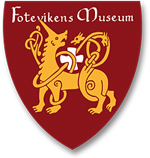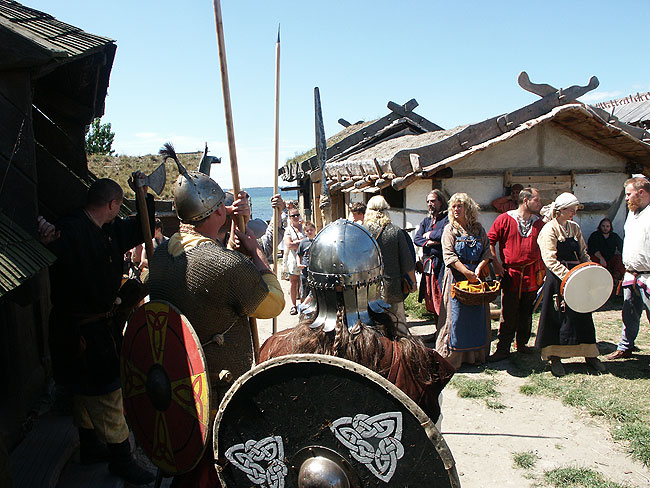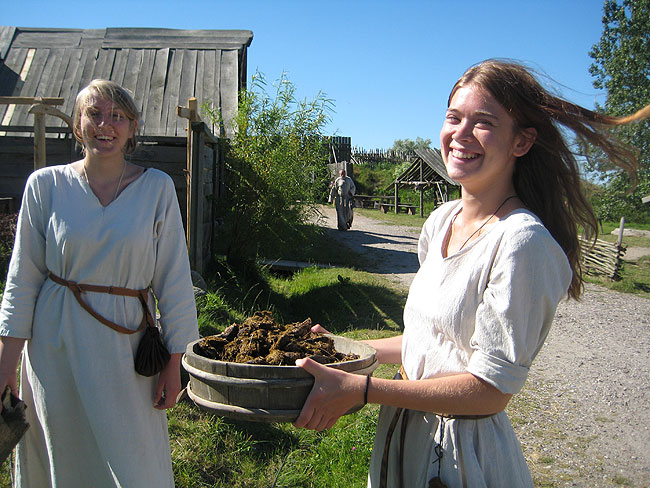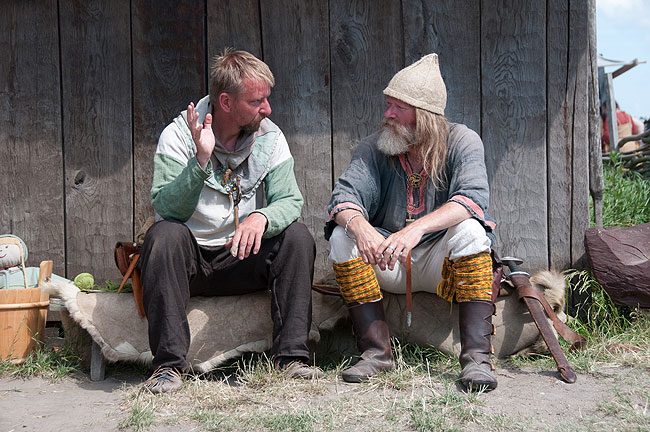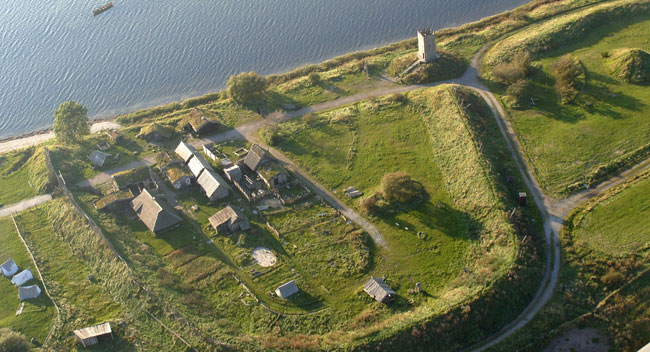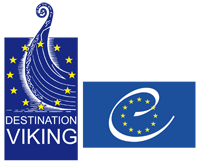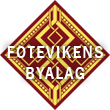A living Viking town
 Foteviken Museum
Foteviken Museum
A living history museum or open air museum as it is also called is no traditional museum as one is normally perceived. There are no glass display cases, no halls with marble floors, no descriptive signs and not even a traditional museum building. Instead you will find an entire late Viking Age town reconstructed using the materials and techniques of the time, as historically correct as you can get based on the archaeological and historical source materials that are available. The town is thus not made up of movie backdrops but of real, solid inhabitable houses.
In order for the town to be experienced as a living town as it might have been roughly a thousand years ago we have inhabited the town with volunteers with an interest in making the Viking Age come alive.
The village community (Byalaget)
One of the goals of the village community is thus to be a resource in the work of the museum to make the Viking town environments come alive, to expand theirs and others knowledge of living history, experimental archaeology and historical crafts, to evolve the interaction and camaraderie within the Viking town, providing visitors with a credible trip through time. Members of the village community not living in the houses have their own plots of land within the town that they take care of.
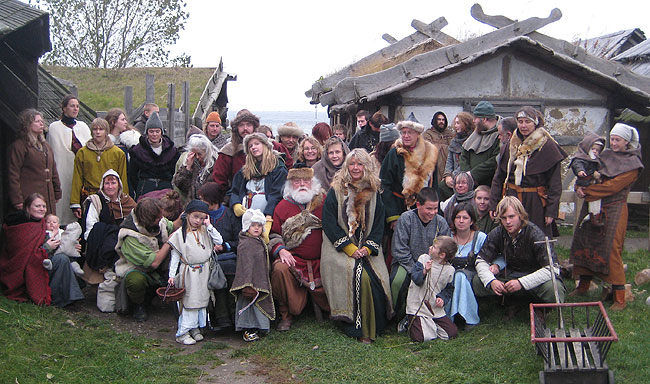
You may risk running into some of these people in the Viking Town.
Most are of course ordinary citizens within the Kingdom of Sweden as well with work and families, and thus live their Viking life in the town more or less sporadically. This means that the number of inhabitants within the town varies greatly from day to day.
 The animals in the town
The animals in the town
Domestic animals and cattle were very important to people in the Viking Age, you lived with them and had them close. Owning many animals was a sign of wealth. The animals provided much of what was needed and there was rarely any leftovers after an animal was butchered, everything was used.
When you arrive in the Viking Town you may meet sheep, poultry and sometimes an Icelandic horse in the pasture.
As the poultry and sheep wander freely within the village it is important as a visitor to show respect and not let your children or dogs chase them.
Re-enactors and volunteers
Since many years Foteviken Museum is cooperating with various Viking associations across Europe. This makes the Viking town a natural gathering place for people with a Viking interest involved in re-enactment and living history. This means that we sometimes receive Vikings from foreign lands who live in the houses within the town for a week or two.
In addition to reenactors we receive people who are curious of the Viking age and willing to work for a few weeks during the summer as volunteers. We can never have enough volunteers, so if you feel drawn to try the life of a Viking for a few weeks please read more here about what to do.
To understand the life in a Viking age town
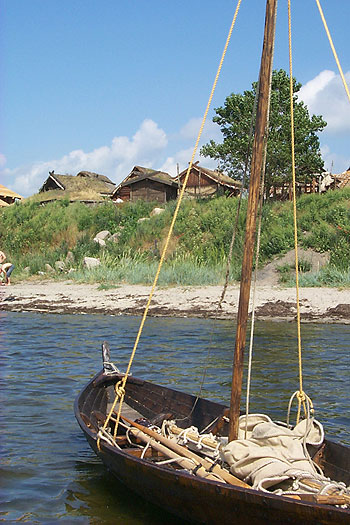 In most of the Viking age towns contact with the sea and water was the most important factor behind their location. The towns became points of contact between sea and land, between the population and foreign merchants. The monarchy has has served a large role in the creation of towns. For example we see strong kings in smaller regions in southern Jutland already during the early Viking age.
In most of the Viking age towns contact with the sea and water was the most important factor behind their location. The towns became points of contact between sea and land, between the population and foreign merchants. The monarchy has has served a large role in the creation of towns. For example we see strong kings in smaller regions in southern Jutland already during the early Viking age.
The town cultures within Scandinavia is thus formed when the Nordic kingdoms are founded. Strong kings were the driving forces behind the creation of these towns. It was within the interest of the king to ensure law and order ruled from the start. Thus it was likely the king that supplied the land, partitioned plots of land and either by force or promise compelled people to move to the new habitation centres. With the forming of towns a fairly rapid relaxation of old societal norms and manners occurred.
When trying to reconstruct a late Viking age town environment it is thus important to consider that the societal norms of the old farming communities would not necessarily still be valid in the new town communities. To understand the living conditions and daily life for the citizens of the towns we have to mostly rely on preserved written material that mainly describes life on the various farms in Norway and Iceland. Extensive material describing early town life at the time is sadly missing.
The Viking town of Foteviken
When the plans for a Living History museum at Foteviken were hatched in 1995 the basic principle was to create an environment reflecting a late Viking age - early mideval town community. This had not been done anywhere else in Europe before. The fact that the location was the site of a major battle in 1134 AD had an influence on the decision to focus on the historical value of the site, thus choosing to recreate a society during the early 12th century. This had several advantages. Much of the oldest preserved writings in Scandinavia dates back to this century -- providing insight into human fates and how relations between people may have worked at this time period. The construction techniques could also be compared with the wooden houses and churches preserved in Norway and not just foundations unearthed in archaeological excavations.
